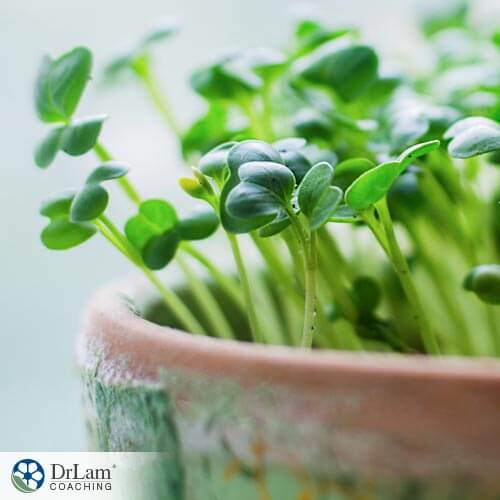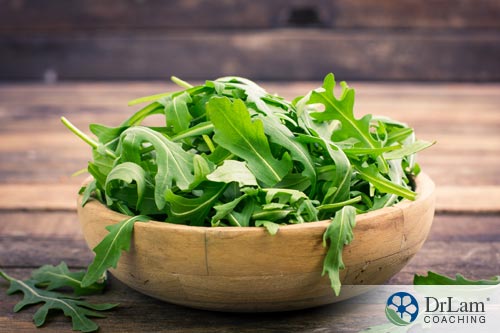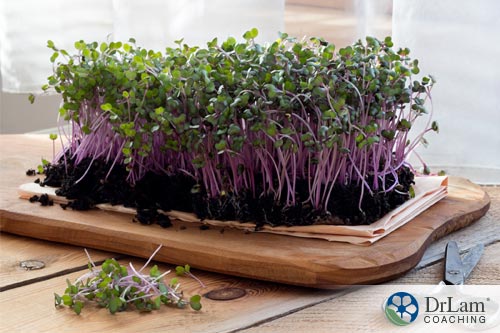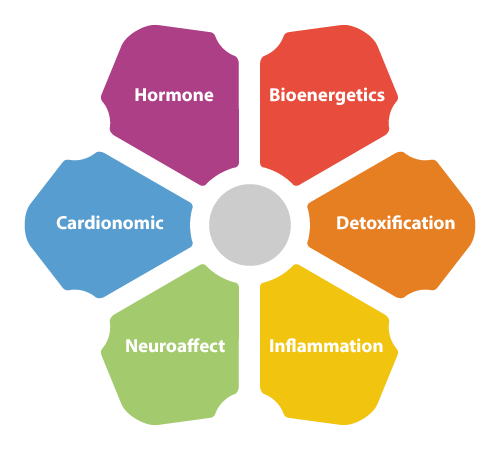 Debuting in the 1980s, microgreens have been steadily growing in popularity as more and more people become increasingly conscious about the foods they eat. Also known as micro-herbs or vegetable confetti, these tasty greens can make any dish more colorful – and healthier. Want to know the best part? You can easily grow them in the comfort of your own home.
Debuting in the 1980s, microgreens have been steadily growing in popularity as more and more people become increasingly conscious about the foods they eat. Also known as micro-herbs or vegetable confetti, these tasty greens can make any dish more colorful – and healthier. Want to know the best part? You can easily grow them in the comfort of your own home.
Microgreens are baby plants that fall somewhere on the plant spectrum between sprouts and baby greens. On average, they only reach a height of around 1 to 3 inches but contain higher levels of nutrients than mature vegetables, making them a great addition to any meal. Microgreens differ from sprouts because they have leaves and a much longer growth cycle which runs between 7 and 21 days after germination. The only similarities they share with baby greens are the fact that both the leaves and stems are edible.
Depending on the microgreen, the taste can range from slightly sour to spicy, and some are even described as bitter. But all of them have a strong distinct taste.
Microgreens are usually brought home as a whole plant and cut off as needed. So, they are typically kept alive until you consume them, which keeps them fresh and nutritious. Moreover, they can make a great addition to your kitchen décor or window sill, while adding a boost of nutritional value to your food.
A variety of seeds can be used. The most popular varieties come from the following plant families:
Every source of microgreens contains a different combination of nutrients. That’s why it is so important to eat a variety of foods to ensure you’re getting all the vitamins and minerals your body needs. Here are some of the most common microgreens and what they can offer health-wise:

Although microgreens vary in taste and nutrient content, one thing is for sure, they are packed with a wide spectrum of nutrients. One day they will become mature greens, but as micros, they have a highly concentrated nutrient profile. Studies have shown that the microgreen nutrient profile can be anywhere from nine to a whopping 40 times higher than those of adult versions. Microgreens also have extremely high concentrations of plant compounds such as antioxidants and polyphenols.
Owing to their high concentrations of plant compounds, vitamins, and minerals, eating vegetables of any form has been linked to a lower risk of diseases, including
There are many ways to add these superfoods to your diet. With a little creativity and some time, you can learn to incorporate microgreens into all your favorite dishes. You could add them to sandwiches, salads, and wraps. Or why not blend them into your daily smoothie or fruit juice for an extra nutrient boost. Wheatgrass is a very popular microgreen that is often added to juices. You can also add microgreens to soups and curries, as a garnish on pizza, or mixed into with your favorite omelet. The options are endless!
Microgreens are one of the easiest plants to grow year-round. They require very little attention and can be grown indoors or outdoors. They’ll do great on your windowsill.
All you need is:
What to do:
 If you’re planning to grow microgreens at home, we recommend only purchasing seeds from reputable companies and use a clean growth medium that has not been contaminated or exposed to salmonella or E. coli. Common growth mediums are peat, perlite, and vermiculite. You could also use single-use growing mats, which are usually quite sanitary.
If you’re planning to grow microgreens at home, we recommend only purchasing seeds from reputable companies and use a clean growth medium that has not been contaminated or exposed to salmonella or E. coli. Common growth mediums are peat, perlite, and vermiculite. You could also use single-use growing mats, which are usually quite sanitary.
Microgreens are believed to be safe for consumption. However, adequate testing has not been done on humans so caution should always be taken. One concern with eating vegetables you have grown at home is the risk of food poisoning from bacteria. However, chances are much slimmer with microgreens compared to sprouts and fully mature vegetables.
Just remember, only the leaf and stem are edible. Do not eat the roots or seeds.
The three pillars of good health are nutrition, along with adequate exercise and sleep. Your diet should consist of plenty of high-quality proteins and carbohydrates, healthy fats, vitamins, and minerals, plus lots of clean, purified water. You should avoid processed foods, alcohol, and saturated fats. Nutrients in food can
Your diet is one of the biggest indicators of weight—and both quality and quantity matter. If you consume the same number of calories you burn, your weight will remain steady. However, if you take in more calories than you’re burning off, your body will convert those extra calories into fat, leading weight gain. As fat tissue accumulates, so does your chance of developing chronic illnesses such as cardiovascular diseases, diabetes, and cancers. Therefore, optimal nutrition will help you feel better and live longer. Some of the adverse effects of poor nutrition include
In addition, choose organic foods where possible to avoid unnecessary preservatives, artificial food colorings, GMOs and pesticides. Following a healthy organic diet that can help your body function optimally, promote a healthy body weight, and prevent chronic diseases, including Adrenal Fatigue Syndrome (AFS).
 Adrenal Fatigue is caused by prolonged stress or extreme physical and psychological stressors that overwork the adrenal glands until they are unable to keep up with your body’s demands for the stress hormone cortisol.
Adrenal Fatigue is caused by prolonged stress or extreme physical and psychological stressors that overwork the adrenal glands until they are unable to keep up with your body’s demands for the stress hormone cortisol.
Your body responds to stress by activating the NeuroEndoMetabolic (NEM) Stress Response, comprised of six interconnected systems that help fulfill this important role. When your body is affected by stress and other factors, the adrenals become compromised, and this can affect every cell in your body.
Conditions like AFS are closely linked to nutrition, therefore, eating a healthy diet can replenish your adrenals, bring the balance back in your body, and reverse some of the negative effects of stress. If you’re suffering from Adrenal Fatigue, it’s important to choose an appropriate diet that will promote your recovery. This means being cautious about everything you eat, including microgreens. That’s why it’s important to seek out an Adrenal Fatigue specialist who can guide you in your recovery.
If you’re trying to change your lifestyle and eat healthier foods, microgreens are a wise choice. But only make changes to your diet gradually. This is the best way to maintain healthy eating habits in the long-term. Always consult with your healthcare provider before starting any new diet, especially if you’re suffering from a chronic condition like AFS.
© Copyright 2020 Michael Lam, M.D. All Rights Reserved.
No, microgreens are not the same thing as sprouts. They fall somewhere on the plant spectrum between sprouts and baby greens. They are ready to eat anywhere from 7 to 21 days after germination, depending on the seed variety.
